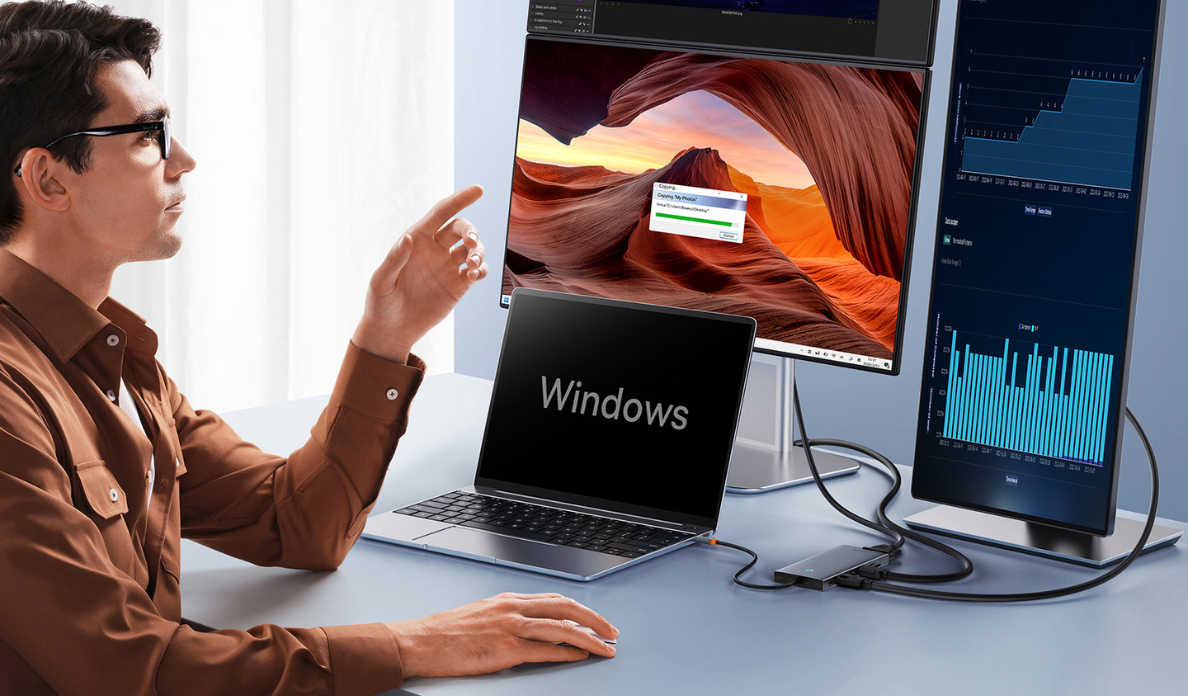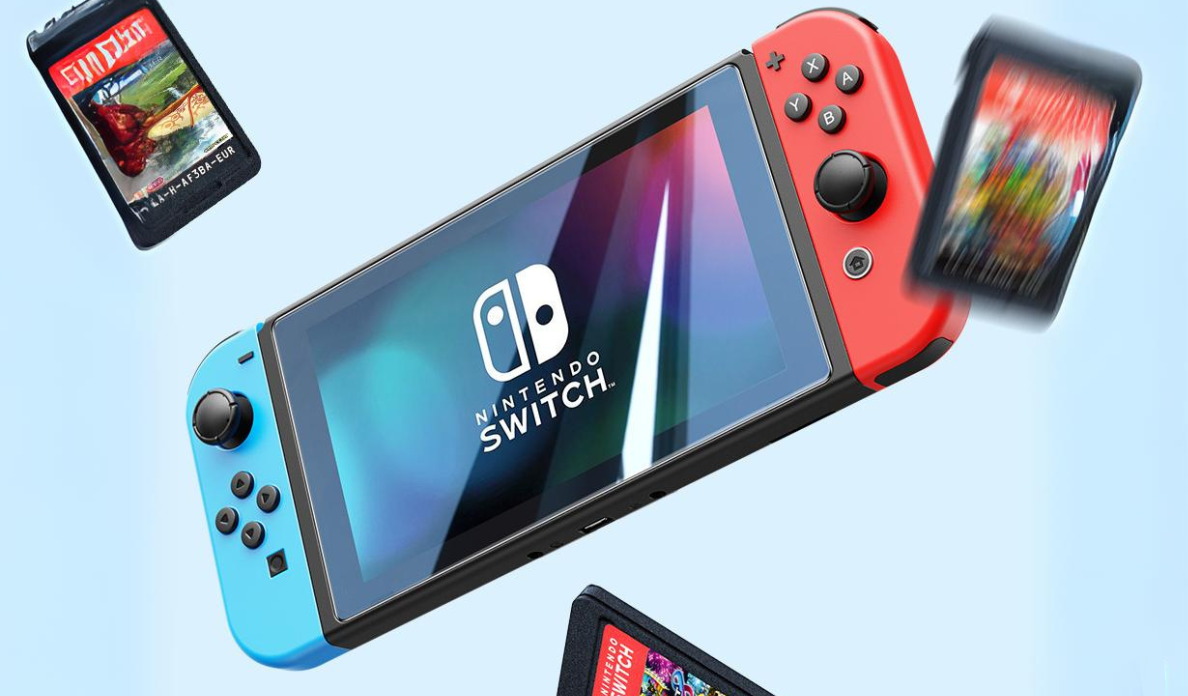It's finished: your dream desktop rig is ready to go. Yet as you prepare to do the honors and hook it up to monitors, you recognize an immediate issue. You can only have a single HDMI port to multiple monitors.
At first glance, it may seem like an irreconcilable problem. You'd need to purchase a new mobo with a more extensive I/O. That would mean rebuilding your computer from the ground up--and perhaps even buying a new case.
Not sure how to use two monitors with one HDMI connection? In this guide, we will discuss a dual monitor single HDMI port configuration. You'll have a rig with multiple monitors set up and ready to go in no time at all.
What Is an HDMI Port?
HDMI is the most common video connection standard on the market. The vast majority of computer monitors, televisions, and projectors include at least one by default. Only recently have new types of display ports (such as Display Port) become more commonplace.
HDMI supports up to 4K video resolution at 60 frames per second. It can handle higher refresh rates at lower resolutions. Only the more modern Display Port can handle higher refresh rates and resolutions.
You can identify the HDMI port as a blocky, trapezoid-esque input on the back of your computer and display device. You usually use a male-to-male cable to connect your source to your output. In this case, your computer is the source and your display is the output.
Let's discuss potential workarounds to get multiple monitors regardless of your number of HDMI ports.
Single HDMI Port to Multiple Monitors
If one of the following solutions doesn't work, there is likely another alternative. Thankfully, you can transmit video data over more than just an HDMI connection.
HDMI Splitter for Dual Monitors
An HDMI splitter is a cheap, easy way to connect two monitors from a single HDMI connection. You can usually purchase an HDMI splitter on the Internet for $20 or less. A higher-quality, more costly splitter may offer additional peripherals or powered options.
Setup
All you have to do is plug in the singular input connector to your device. Then, use cables to connect the two output connectors to your monitors.
It works with no preparation. You don't need to install any additional software. If any further drivers are needed, your computer will install them automatically.
HDMI Splitter Limitations
As we've mentioned, there is a bandwidth limit to HDMI. This means you can only transmit up to a certain resolution. Check with your HDMI splitter manufacturer for that limit.
Also, keep in mind that the splitter is only duplicating one resolution. If you have monitors with different resolutions (i.e. a 2K and 4K monitor) you may run into issues.
Finally, there may be some incompatibilities between HDMI versions. The current HDMI 2.1 is backward-compatible, but older versions are obviously not forward-compatible. Plan accordingly.
An HDMI Splitter Is Temporary
It's important to understand that an HDMI splitter is only meant to be a temporary solution. It looks ugly and dangles from your I/O. To make matters worse, it puts unnecessary weight on your somewhat delicate HDMI ports.
Use a USB-C Port
USB-C is quickly becoming the standard not just for data transfer connections, but video as well. It can provide power and video to a compatible display device.
That said, very few monitors on the market have a USB-C Display Port/HDMI option. It's only in recent years that manufacturers have begun to produce USB-C-compatible monitors.
Regardless, it's worth a shot if you purchased your monitor in the past 2-3 years. Check the manual or the back of your monitor to see if it has USB-C.
Setup
All you have to do is connect a male-to-male USB-C cable from your device to your monitors. Your device will detect the monitor output automatically. You won't have to dig into the settings to make things work.
Limitations
The only limitation here is how many USB-C ports you have--as well as header bandwidth. The header is where you plug in USBs to your device's built-in ports. Your device can only support so much power and data bandwidth.
Consider purchasing a dock to give yourself additional USB-C and HDMI ports.
Install a Graphics Card
Do you use your computer for graphic design, video editing, or gaming? You may benefit from a graphics card. This gives you a significant performance advantage compared to built-in graphics systems like Intel HD graphics.
Most importantly for the purposes of this article, it will give you additional HDMI and Display Port spots. If you were already considering getting one, this will solve your problem without extra dongles.
Setup
This will be the most complicated option on the list. If you are not familiar with building or maintaining computers, consider contacting a professional. You do not want to risk voiding your warranty or breaking something.
That said, graphics cards are one of the easiest components to install. All you need is an open PCIe slot. Before purchasing, make sure your motherboard and case support the GPU model and length.
Make sure to power off your computer completely and switch off the power supply. Ground yourself with an anti-static wrist strap and insert the GPU. Be wary of any cables or motherboard components that may get in the way before insertion.
Make sure your GPU clicks firmly into place in the PCIe slot. Don't forget to screw it into the backside of the case.
Plug in your monitors to the GPU, not the I/O ports. If it runs properly, make sure to update the graphics drivers. Now you are all set!
Computer Docking Station
A computer docking station is the best option on this list. It not only extends your HDMI and Display Port connectors, but it increases your count of USB ports. It also provides less common ports, such as SD and micro SD slots.
How to Set Up a Docking Station with Two Monitors

First, find a high-quality docking station. Cheap components will wear out more quickly and may not have their full advertised specs. As the saying goes, going cheap is more expensive in the end.
Make sure to plug in your docking station to a USB-C 3.0 or 3.1 slot. Do not use an adapter to connect your USB-C to a USB type A connector. This will hamstring your docking station's performance.
Finally, make sure to plug your docking station into a power source. Without this, you will be unable to supply the proper amount of power to your peripherals and external devices.
Benefits of a Docking Station
An HDMI splitter is cheap and convenient, but it just adds another dongle to your desk. It ends up making cable management more frustrating and puts unneeded weight on your I/O--a bad idea for durability. Here's why a docking station is superior.
More Ports
A docking station gives you all the connectors your could ever need. You'll be able to plug in Bluetooth mice, hard drives, electronic devices, and still have room for more.
Most people tend to run out of their header space quite quickly. So, think of this as a way to future-proof your device. Especially if you plan on adding another monitor in the future.
Power Supply
A docking station makes sure that you never run out of power. A passive USB splitter or HDMI splitter can only supply as much power as your computer can give. A mobo only supplies a certain amount of voltage per header, but a powered docking station doesn't have this limitation.
Convenience
Finally, it's more convenient. You can place the docking station anywhere you like, such as on your desktop. You can plug-and-play as you need and have direct access to monitor inputs.
This beats crawling under your desk or contorting your spine to reach the I/O. It makes cleaning up dust easier, too.
Some Limitations
Check the limitations of your device with the manufacturer. Some computers simply cannot support more than a certain amount of monitors. For example, the Mac Mini has one HDMI port and can only support a max of two monitors.
In other words, don't go ahead and purchase hardware that supports three or more monitors if your device cannot handle it. Often, these software limitations are virtually impossible to overcome.
This is especially the case for a mini PC or laptop. Double-check before making any purchases.
Find High-Quality Gear at Baseus
If you've just purchased a new computer, you may run into the issue of having a single HDMI port to multiple monitors situation. Fortunately, there are plenty of solutions to give yourself additional monitors. We recommend purchasing a docking station for ease of use and expanding your computer's capacity for peripherals.
Baseus is an industry leader in affordable, high-quality gear to power your digital life. Shop for our excellent hubs and docks to add extra HDMI ports--and much more.
 United States/English
United States/English







1 comment
steve
is there such a thing as a hub/dock that has a single hdmi input and 2 or more hdmi outputs that supports extended displays? I have an older CPU with one HDMI port and of course the VGA port. no USB C ports. I would like to connect my two hdmi monitors to it for use with extendable displays.
is there such a thing as a hub/dock that has a single hdmi input and 2 or more hdmi outputs that supports extended displays? I have an older CPU with one HDMI port and of course the VGA port. no USB C ports. I would like to connect my two hdmi monitors to it for use with extendable displays.